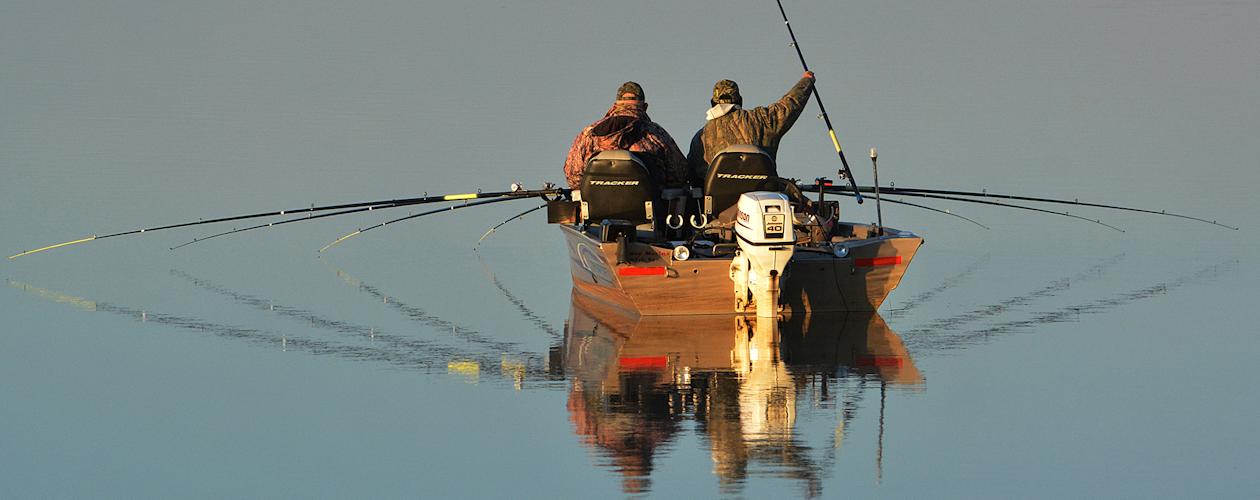Panfish Fishing 101
While crappie have gotten the headlines for Kentucky and Barkley Lakes for years, and lakes like Reelfoot Lake have gotten the press on bluegills, we have quietly become a destination for anglers who are looking for some great panfish action.
With the onset of the aquatic grasses in the 80s, we started seeing good catches of a fish that was new to many: the Redear Sunfish or Shellcracker. Those who learned the tricks to catch them also learned that those who knew those tricks were the most secretive fishermen around. The locations of redear bedding areas were secrets that were closely guarded.
With the onset of better electronics, and especially the side-scan technology, average fishermen now have the tools to locate the off-shore bedding areas that had been guarded for years.
Bluegill typically spawn two to three times a year, usually around the full moon in April, May, and June. Redears seem to spawn when the water temperatures get to around 65 degrees (earlier than bluegills), and may spawn multiple times also.
While bluegills may spawn in very shallow areas to several feet deep, the redears will be found nearby, but deeper than the bluegills. Both species prefer sandy to pea gravel bottoms where they fan out beds that may look like craters. An old-timer once told me that on a side-scan, these craters look like a horse walked in a muddy barn lot.
Both panfish will feed on whatever is available, from bugs and worms, to small fish and crayfish. The hatches of Mayflies, what we call Willow Flies, always draw the attention of both species and can provide fast and furious action.
Many flyrod fishermen are like a kid at Christmas when the Willow Flies hatch. Popping bugs or sinking flies will draw strikes. Once hooked, they are some of the meanest, hardest fighting fish in our lakes. It has been said if redears or bluegills were as big as bass , we could never land one on regular tackle.
Look for sandy areas with small pea gravel-type bottoms for bedding panfish. Areas where a creek runs into a bay are the best places to start. Running a boat into shallow bedding areas is a sure way to ruin a day of bluegill or redear fishing.
A stealthy approach is required. Noise like banging items around the bottom of one's boat will put the fish into a non-biting mood, if not run them out of the area entirely. Please note that redears are the most skittish freshwater species around these parts. They require long casts and a very quiet presentation.
Both species can be caught on live bait like crickets, red worms or small pieces of nightcrawlers, or willow flies threaded onto a long shank hook. Many of the most successful redear and bull bluegill fishermen use very small dark-colored jigs and tip them with a wax worm or piece of redworm/nightcrawler.
My best rig has always been what is called a dropper rig (bass guys call them drop-shot rigs). A small split-shot weight is placed below a small jig or hook tied with a loop knot. I prefer my hook be 12-18 inches above the weight.
This rig is baited, then cast past the bedding area and S-L-O-W-L-Y dragged through the spot. Many use a raise-drop-then-reel retrieve while a very slow constant reeling can be a better choice. Some strikes may feel like the rod is being ripped out of one's hands, but most will be a tap then the line moving off to the side. Either way, you will be in for hot action and great eating. Don't be surprised if channel catfish, yellow perch, drums or any of a variety of other species show up for a free meal.
A mistake I see often at the cleaning station is one getting excited when getting into a bedding area and keeping everything they catch. Later, when they start to clean their catch, they realize how much work it is to clean a mess of six-inch bluegills.
While there are no size limits on bluegills or redears, there is a limit of 20 redears per fisherman per day. Also, while it is lawful to keep either sex of redears, I encourage you to only keep a trophy female redear for mounting or a deep hooked and bleeding female redear.
Releasing the spawning females will help assure we will continue to see these wonderful game fish populations increase. The female redears will be yellow to pale orange on the breast and belly while the males will be dark orange to bronze.
If one encounters Asian carp in traditional shallow panfish spawning areas, look deeper in that same area. Many times panfish will set up housekeeping in slightly deeper areas near cover such as stakebeds, brush piles or trees down on steep, rocky bank areas.
Editor's Note: Fishing 101: Crappie Fishing is written by professional fishing guide Doug Wynn.








